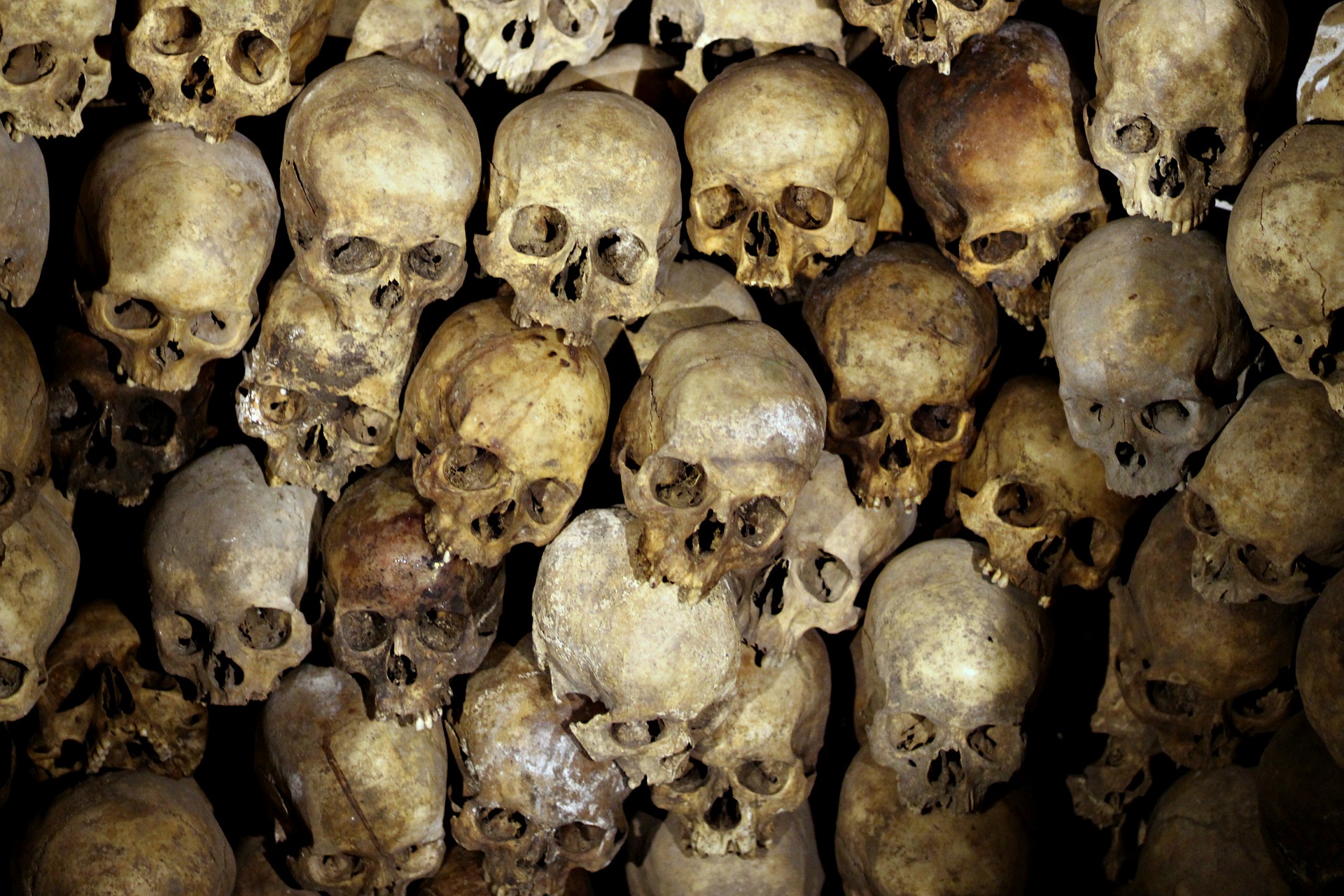 Submitted by The Void on
Submitted by The Void on

pixabay.com
The soaring heights of the Himalayas have long sparked the imagination of human beings. While Everest is the highest peak among the massive mountain chains, and has in the last one hundred years become the site of a bleak open graveyard, there are other, stranger places tucked among the peaks who have no less of a grisly history. One such place lay among the Garwhal Himalayas, at a dizzying height of 16,000 feet. There is a lake, Roopkund Lake, that has played host to a macabre mystery that has gone unsolved for 1200 years, until now.
Surrounded by glaciers and bleak stretches of rocks, the approximately six foot deep lake is generally covered in ice and snow most of the year. When the snow melts in the warmer months, it reveals a gruesome secret: skeletons, hundreds of them, scattered in and around the lake. Some of the bodies still have bits of flesh and hair stuck to the otherwise bare bones.
Explanations of where the unfortunates came from have varied over the years. Some believed the dead were victims of some strange ritual murder performed on the shores of the high lake. Others believed attendees of some ritual were perhaps killed by a sudden epidemic, or perhaps killed themselves in a suicide ritual. In the 19th century, some speculated that the bodies belonged to the army under General Zorawar Singh of Kashmir, who disappeared returning from the battle of Tibet in 1841.
All seemed plausible, until 21st century technology revealed several details about the mystery bodies. A team with the National Geographic magazine retrieved several of the skeletons and took them to the Centre for Cellular and Molecular Biology in Hyderabad, India, where genetic tests were run. The results were revealing. The skeletons were made up of men, women, and children, and all were of Indian descent, and dated from 850AD. Some were Brahmins from the region of Maharashta. The lake has long been the site of a pilgrimage every twelve years called the Nanda Devi Raj, where the devout worship the Goddess Nanda. Judging by the diversity of the skeletons and the probably presence of Brahmins amongst the dead, it is likely that the victims were a group of such pilgrims.
Examinations of the bones showed that the victims were struck a killing blow to the head by something round. The lack of injuries to any other parts of the bodies ruled out deaths by violence or avalanche. Researchers then concluded that the victims died when huge hailstones fell on them from above in what must have been a freak hailstorm.
There are more mysteries to be solved about what exactly happened at Skeleton Lake. The site is in danger from the hundreds of hikers who visit it every year. Bones have a tendency to disappear, or they are rearranged or otherwise desecrated by visitors.
http://www.oddlyhistorical.com/2016/02/
Sources:
Alam, Aniket, “Fathoming the Ancient Remains of Roopkund,” thehindu.com. June 29, 2004. The Hindu. January 15, 2016. http://www.thehindu.com/2004/06/29/stories/2004062905461200.htm
“National Geographic expos solves Roopkund skeleton mystery,” archive.deccanherald.com. October 20, 2004. Deccan Herald. January 15, 2016. http://archive.deccanherald.com/Deccanherald/oct302004/n12.asp
“Roopkund lake’s skeleton mystery solved: Scientists reveal bones belong to 9th century people who died during heavy hail storm,” indiatoday.intotoday.in. May 31, 2013. India Today. January 15, 2016. http://indiatoday.intoday.in/story/uttarakhand-roopkund-skeleton-lake-mystery-solved-bones-9th-century-tribesmen-died-of-hail-storms/1/277681.html